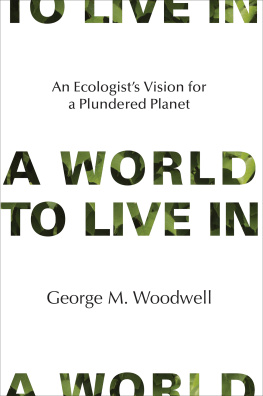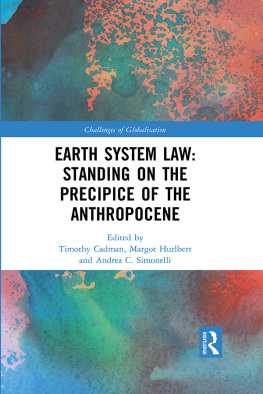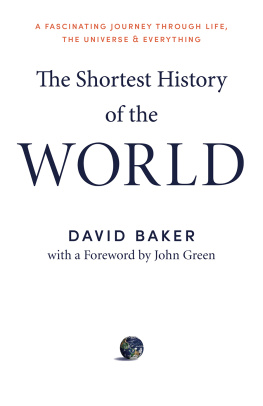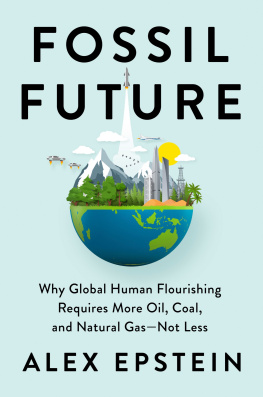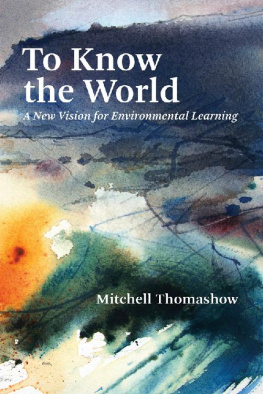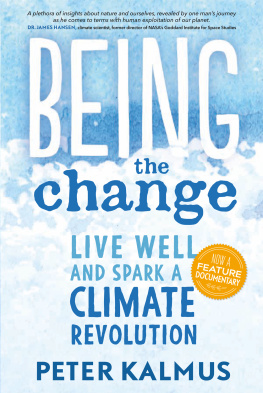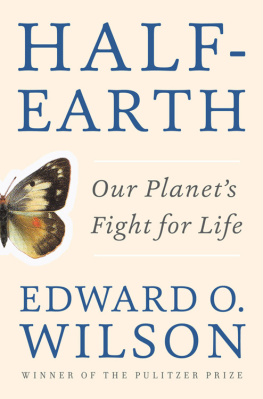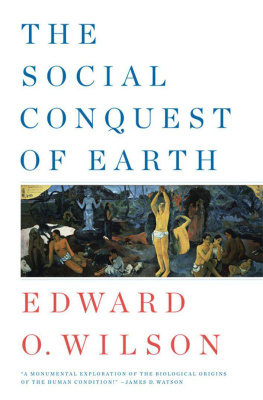A World to Live In
An Ecologists Vision For a Plundered Planet
George M. Woodwell
The MIT Press
Cambridge, Massachusetts
London, England
2016 George M. Woodwell
All rights reserved. No part of this book may be reproduced in any form by any electronic or mechanical means (including photocopying, recording, or information storage and retrieval) without permission in writing from the publisher.
This book was set in Stone Sans and Copperplate by the MIT Press. Printed and bound in the United States of America.
ISBN: 978-0-262-03407-4 (hardcover)
ISBN: 978-0-262-33367-2 (MIT e-book)
978-0-262-33369-6 (retail e-book)
ISBN: 978-0-262-33368-9 (library e-book)
Library of Congress Cataloging-in-Publication Data
Names: Woodwell, G. M.
Title: A world to live in : an ecologists vision for a plundered planet /
George M. Woodwell.
Description: Cambridge, MA : The MIT Press, [2015] | Includes bibliographical
references and index.
Identifiers: LCCN 2015038373 | ISBN 9780262034074 (hardcover : alk. paper)
Subjects: LCSH: Restoration ecology. | Global environmental change. | Global
warming. | Environmental degradation. | Pollution. | Air--Pollution. |
Radioactive pollution of the atmosphere.
Classification: LCC QH541.15.R45 W65 2015 | DDC 577.27--dc23 LC record available at http://lccn.loc.gov/2015038373
EPUB Version 1.0
Contents
The seventy or more years that have passed since the dawn of the nuclear age have brought greater changes to the earth than any similar period in all of human history. The most fundamental involve intrusions into the ecology of the globe, the biosphere, whose life-giving envelope of light and air and climate has been changed irreparably in a century-long storm of industrial developmenta wink in the half-billion years of biotic evolution. The changes have been legion: many threatening, some promising. They have touched the lives of all, crushed some and empowered others. They have entrained changes in government that undermine democracy and civil rights, produced countless innovations in human affairs, and created gross transformations in economic and human prospects.
For an ecologist with an interest in the human condition, ever seeking paths to a stable and equitable future in a world of seven billion humans, and more, the trip has been both fascinating and frightening. Ive been fortunate to join in these effortsa gift of chance, but a rich one that offered unusual experience in science and conservation and government over those years. I have attempted to capture some of that experience in this book, not to write a memoir, but to offer a scientists perspective on how we have come to this pass, the shoals we must now navigate, and how we might find a far brighter future than now appears on the horizon. As we approach the third decade of the new millennium, the shadow of a poisoned earth and infinitely destructive climatic disruption threaten every element of what we might hope for as a human future.
I have not been alone in this mission. I have had the benefit all along the way of rich associations with scholarly colleagues of great talent, many of whom have written at length on visions of the future, and some of whom, such as Lester Brown, Amory Lovins, James Gustave Speth, John Adams, Richard Ayres, John Holdren, and Paul Ehrlich, have built institutions to explore the issues with ever-greater cogency. Not surprisingly, although each follows a different path, their perspectives fuse around the universal need to preserve the globes biotic systems as the sine qua non of success in passing a civilization and a habitable earth on to successive generations. And that, of course, is my topic, formulated by colleagues in various contexts but by none better than Speth in The Bridge at the Edge of the World :
The escalating processes of climate disruption, biotic impoverishment, and toxification that continue despite decades of warnings and earnest effort constitute a severe indictment, but an indictment of what, exactly? If we want to reverse todays destructive trends, forestall further and greater losses, and leave a bountiful world for our children and grandchildren, we must return to fundamentals and seek to understand both the underlying forces driving such destructive trends and the economic and political system that gives these forces free rein. Then we can ask what can be done to change the system.
A youthful attachment to an heirloom farm in a far corner of the town of York in southern Maine led me early in life to question the ways in which human welfare and wealth were tied to land and soil, and the environment more generally. That part of Maine is hilly drumlin country, with diversified land, fruitful enough for its farmers to have made a living on in the first centuries of European settlement. Successive families on this old farm over three hundred years and more had found they could do just a bit better than mere subsistence. While the more recent ancestors among them forged their own tools and grew celery in the swamp, their potential was limited by the agricultural potential of land, locale, and later, economic shifts, technological change, and other factors quite beyond their control. Subsistence ultimately required more than the land, at least more than that land, could offer. The economic crash of 1929 stole family savings through the failure of the local bank. The house burned in 1933 and was not then rebuilt. Full-time farming ceaseda common occurrence in those years and later as the locus of commerce in farming moved westward to some of the richest soils in the world, and farming itself was transformed into an increasingly mechanized industry on more easily managed landscapes.
That was the story as commonly written and understood. But it was not quite that simple. Economic and political changes over time brought a consolidation of power in corporations that could take advantage of the farmers ties to land and crop and the need for an immediate market for milk and other perishable farm products. Corporate monopolies could easily manipulate prices, and did. Ties to life-giving land passed on for generations became bondage, with commitments to markets developing into a new form of tyranny. Partial remedies lay in laws protecting farmers and their markets. Milk-control boards begun in some states in the 1940s, for example, helped assure a market and a fair price to the farmer, although industrial interests entered into all such adjustments as well. As corporate forces grew more powerful and spread across the nation, it became increasingly clear that preservation of human welfare was not a simple product of wise management of intrinsic resources of land and water in a free market. The market was not free. A fair and vigorous economic system required regulation by a government capable of, and interested in, protecting the welfare of individualsall of them.
The intensification inherent in both population growth and industrial development worldwide has put soaring new demands on all resources. Intensification has always accompanied civilizations growth, but it has been especially conspicuous in the seven decades since the close of World War II, first in the United States and other Western nations, and more recently in China and other emerging economies. The global population has expanded over those decades from about 2.3 billion people in 1940 to more than 7 billion today, and continues to rise. In that period, world economic activity as measured by the gross domestic product (GDP) soared more than twenty-five-fold from about $3 trillion to about $85 trillion in 2012.
That growth has involved the development of powerful economic institutionsin some nations, state organized, and in others, such as the United States, mainly in the form of private sector banks and corporationswhose financial influence entrains political power. Government is easily bent to favor corporate interests; human rights and public welfare usually have less priority. Early in that evolution the competition was mainly for control of agricultural markets, but it quickly became a competition for land, water, energy, locale, and people as opportunities for further growth diminished.

